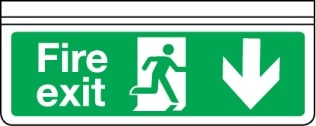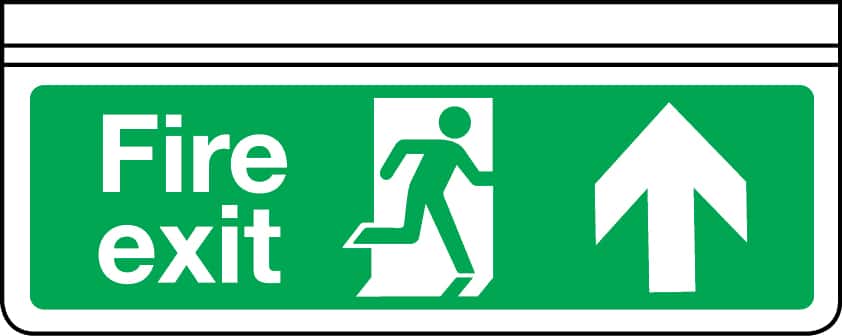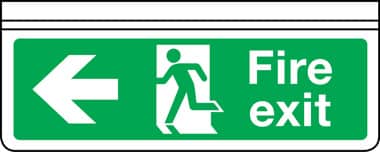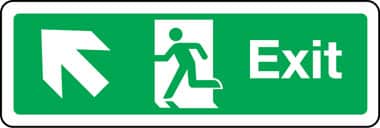Making Provision for the Disabled – It’s not just about the law or wheelchairs.
Since the introduction of the Disability Discrimination Act 1995 (DDA) all service providers, whatever their size have had to make reasonable adjustments to the physical features of their premises to overcome any physical barriers to access.
One key element – and a relatively low-cost one at that – is disability signage. Below we set out the background to the legislation (and the need) and show how reviewing one’s signs can have a big impact on fulfilling the legal, practical, and moral obligations of our fellow citizens.
Disability Discrimination Act 1995
“why bother it doesn’t effect me…does it?”
It does effect any business that provides a service, whether it’s free or paid for. Prior to 1st October, part 2 of the DDA only applied to companies that had more than 15 employees. However, since 1st October, ALL employers must comply with the DDA’s provision on employment and occupation. There are approximately 8.6 million people with disabilities in the UK. Their estimated annual purchasing power is between £40 and £50 billion.
“What are ‘reasonable’ adjustments?” – they must be specific to the building and the type of service being provided. Provisions should not just be restricted to improving wheelchair access, only 5% of those with disabilities are in wheelchairs.
- There are 600,000 wheelchair users
- 2.5-3 million visually impaired
- 1.5-6 million reading difficulties
- 8 million deaf or hard of hearing
- 15 million mental health difficulties
- 1 in 3 people over 55 have Arthritis
(source: Department for Inclusive Environments University of Reading)
BS 8300:2001
The British Standard gives dimensions and details of the physical requirements needed in order to comply with the DDA as well as signage requirements.
Disability Rights Commission
The DRC not only provides help for disabled people, but also produced a Code of Practice and various guides for service providers.
If you are a service provider or an employer, you need to:
- assess the problem, or better still
- have an access audit done
- contact local access groups
- produce an access plan
Once you know which physical features may make it difficult for disabled people to use your services then the law gives you a choice.
- you can alter the feature
- you can remove the feature
- you can find a way of avoiding it
- you can provide the service in another way
The DRC strongly recommends the ”inclusive” approach. Removal or alteration of a feature is the most likely option to ensure that disabled people receive the services in the same way as other customers.
What areas should be considered when making reasonable adjustments
- Routes to and around buildings
- Designated car parking bays
- Building entrances and exits
- Directions to facilities – lifts, toilets, etc.
- Information on services available to the disabled
- Clear indication of help points
- Emergency exit routes and disabled refuge points
- Enhancement of general information signage
Where to install suitable DDA signage
“Signs should form part of an integrated communication scheme that gives clear directions, information and instructions for use of a building” – BS 8300:2001. Signage that complies with the DDA is based on the guidelines shown in the Sign Design Guide and developed by the Joint Mobility Unit.
Important things to consider when buying DDA signage
Text in upper case
Upper and lower case text provides a recognisable “footprint” even if the text can’t be read.
Letter Heights
| Viewing Distance |
Type of sign |
“x” height in mm |
| Long Distance |
External Fascias |
200mm |
| External location |
90 – 120mm |
| External Directions |
90mm |
| House numbers |
90mm |
| Medium Range |
Location & Direction |
60mm |
| Identification signs |
40mm |
| Close Range |
Room Identification |
35mm |
| Directories |
15mm |
| Wall mounted information |
15mm |
Good Contrast
Black and white provides the most obvious contrast but can cause halation for some people due to the extreme contrast and glare.
So we are looking for:-
- Clear text in upper and lower case
- preferably white text on a darker background
- letter heights based on BS 8300 or “Sign Design Guide”
- good contrast between text and background
- a white border to emphasise the sign
- a matt finish to avoid glare
Position of signs
Consistency of sign height and position throughout the building is important. Signs should be placed between 1400mm and 1700mm for visually impaired persons when standing. For wheelchair users signs should be placed between 1000mm and 1100mm above floor level. Signs associated with control panels, e.g. lifts or door entry systems should be located between 900mm x 1200mm, to meet the needs of both wheelchair users and people standing.
Designated Car parking
- Parking bays and floor graphics – one space for each disabled employee plus 2% of available spaces.
- disabled parking bay signs
- directional signage to reception or other areas
- contrasting bands of colour on posts or columns
- door entry signs
Information Signage
- The reception point should be clearly signed
- signs indicating lifts, stairs, and other parts of the building
- Facilities on each floor should be shown on landings and stairs
- clear floor level signs in stair wells and by lifts
- orientation signs in large buildings
- directional signs, there and back
- disabled toilets, telephones, induction loop signs, etc.
Escape Route Signage
- General escape route signage may need to be enlarged
- Fire Exit signs to include routes to disabled refuges
- emergency evacuation lift signs
- Clear signs from the building to the assembly areas
Compliance with the DDA is not about avoiding being sued or fined but about caring for staff and improving your service for everyone.
 Progress down from here
Progress down from here Progress forward from here or progress forward and through here. The most commonly used emergency escape sign often seen above doorways.
Progress forward from here or progress forward and through here. The most commonly used emergency escape sign often seen above doorways. Progress to the right from here
Progress to the right from here Progress to the left from here
Progress to the left from here Progress down and right from here
Progress down and right from here Progress down and left from here
Progress down and left from here Progress up and right from here
Progress up and right from here Progress up and left from here
Progress up and left from here
